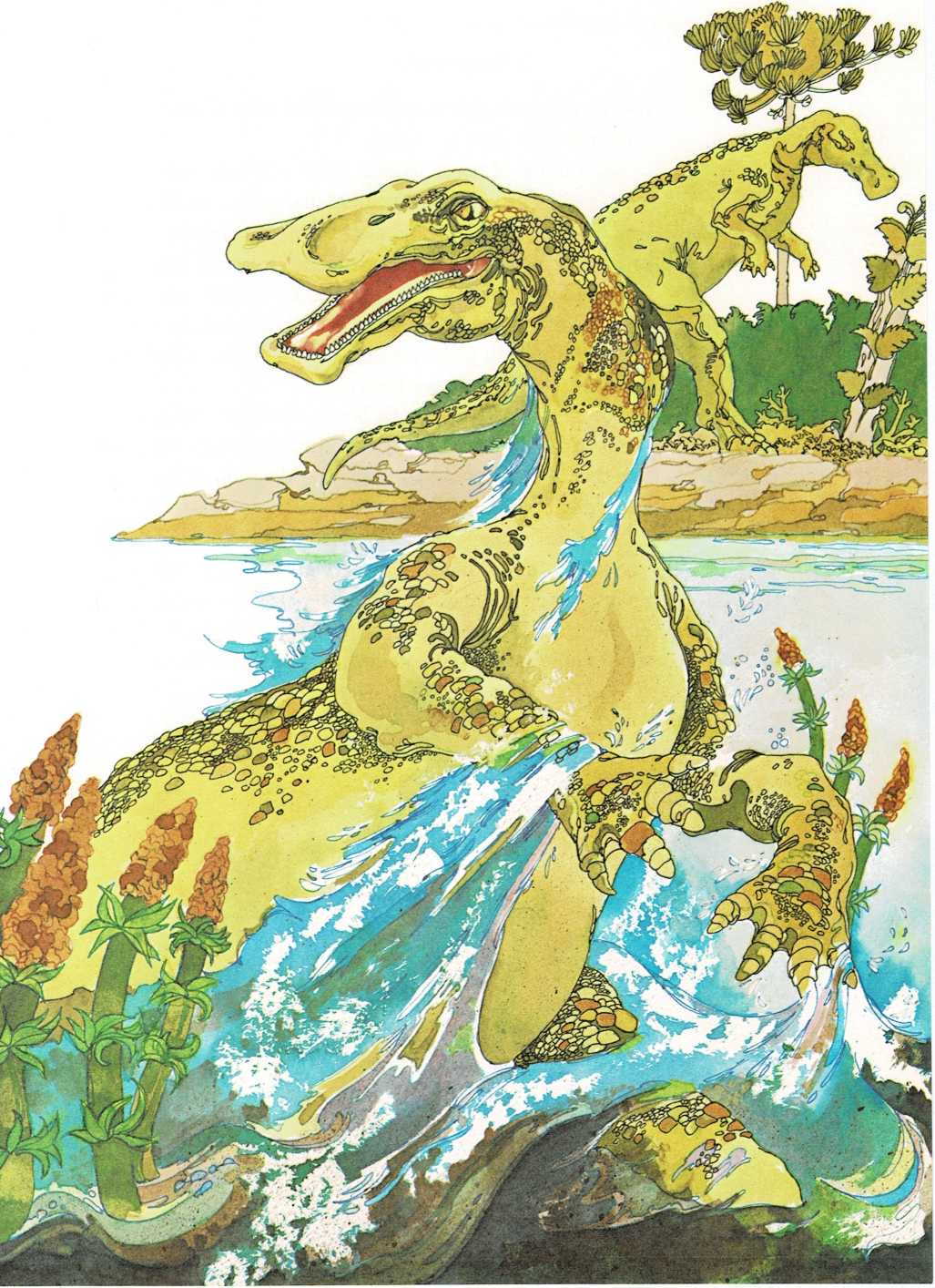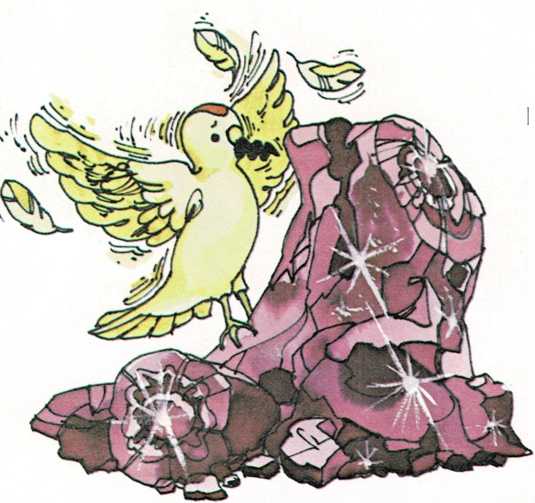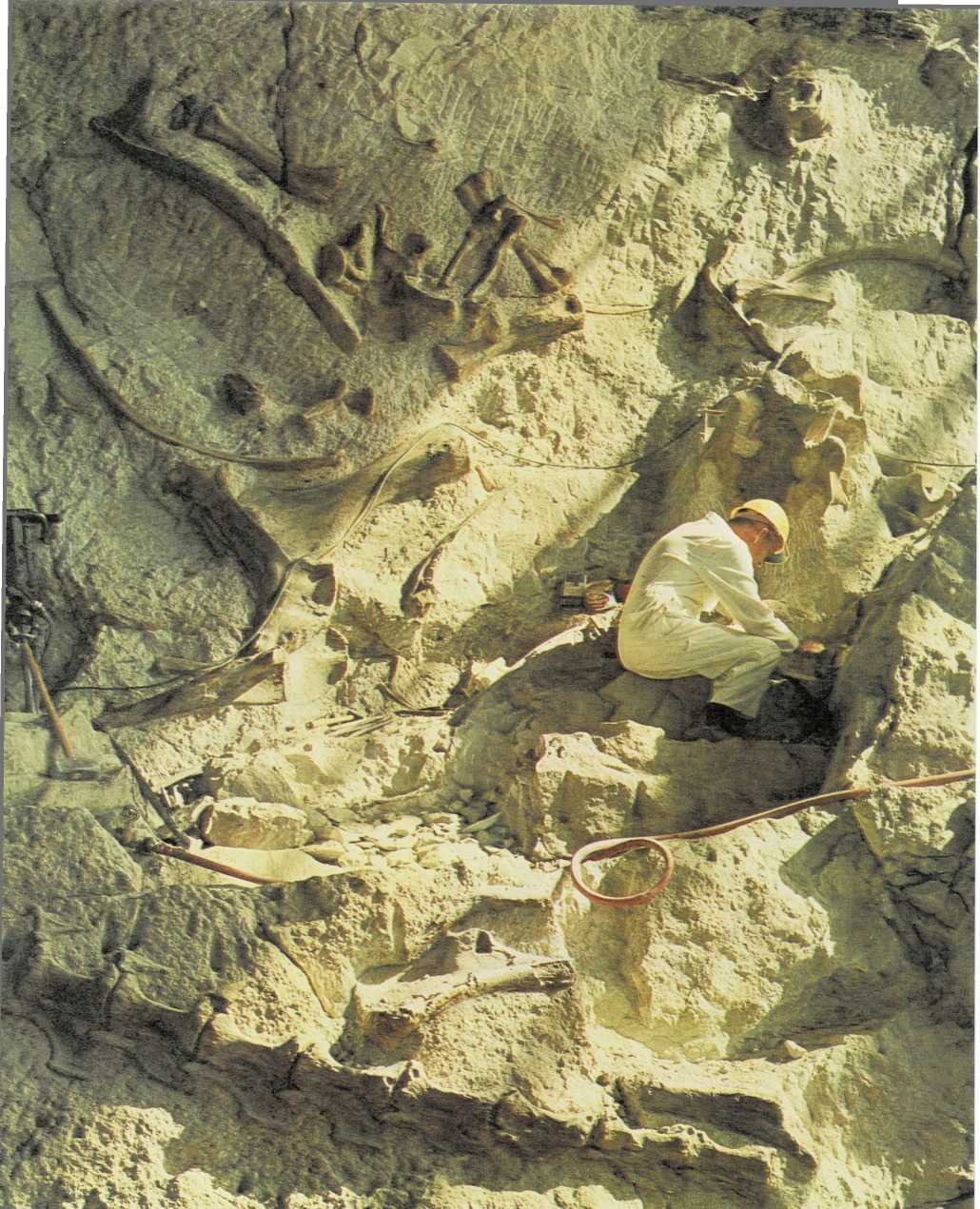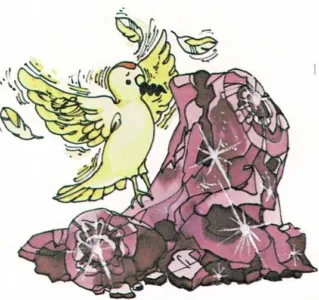Bones in rock
A giant dinosaur, with jaws shaped like the bill of a duck, plodded
along the shore of a lake in search of food. Sighting large horsetail
plants growing in shallow water, it waded out toward them.
Suddenly, the big dinosaur stepped into a wide, deep hole filled with
soft, watery mud. At once, the animal began to sink.
It thrashed about wildly, trying to find solid ground under its feet.
The weight of its own body dragged it down. The mud rose to its chest,
then to its neck. Slowly, its head went under. Mud filled its mouth and
nostrils and it died. That was eighty million years ago.
The dinosaur’s body sank to the bottom of the hole. Slowly, the soft
parts of the dinosaur rotted away. Only its bones were left.
Over many years, the mud around the bones was packed tightly together.
In time, it became clay. Over many more years, the clay turned to rock.
And, as still more years passed, the lake dried up. The rock with the
dinosaur bones in it was now the side of a cliff.
During all those years, water filled with dissolved minerals often got
into the bones. Slowly, all the


hollow places in the bones were filled with dissolved minerals that then
hardened.
As millions of years passed, wind and rain slowly wore away the side of
the cliff. Finally, so much rock was worn away that some of the dinosaur
bones, preserved in the rock all those years, were sticking out.
One day, eighty million years after the dinosaur had died, a group of
scientists saw the bones sticking out of the cliff. With pickaxes and
crowbars, the scientists removed the bones from the rock.
The scientists packed the bones carefully and sent them to a museum. At
the museum, the bones were put together. People could then see the
skeleton of the giant creature that had lived so long ago.
Most of the skeletons of prehistoric animals that you see in museums
were preserved in rock in this way. Such preserved bones are called
fossils. Sometimes, all of the original material is replaced with
minerals. Then the fossil is said to be petrified, or turned to stone.

It’s a Fact
Trees have been preserved just as dinosaur bones were, in Arizona,
there’s a petrified “forest” of tree trunks that were turned to stone
millions of years ago.


